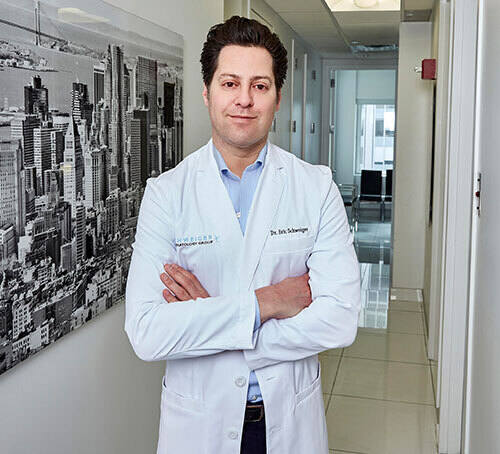Varicose Veins
Varicose veins, which are thickened and enlarged veins, are easy to detect. They present on the skin as ropy, twisty, bulging and unsightly cord-like veins that are purple or dark blue in color. Varicose veins can appear anywhere on the body, but most commonly appear on legs, thighs and feet.
What Causes Varicose Veins?
The cause of varicose veins is mostly thought to be genetic. If you’re born with poorly functioning valves within the veins or abnormalities within the vein wall, this could cause varicose veins. If you have an ill-functioning valve and are standing up, the blood flow can reverse and flow down, as opposed to up towards the heart, which is the proper way to flow. Other cause of varicose veins include:
- Pregnancy: During pregnancy, there is an increase in blood volume as well as increased pressure in the legs from the uterus as well as hormonal changes, all of which can contribute to varicose veins during pregnancy.
- Obesity: Weight gain can cause varicose veins
- Standing for long periods of time
- Aging
- Surgery or trauma
Varicose Veins Symptoms
The symptoms of varicose veins are mostly cosmetic and can include bulging veins that protrude from the skin. These veins can cause a feeling of aches and pains. Some people with varicose veins may have no symptoms at all. Tenderness in the vein can occur as can redness and swelling. If your vein feels firm and hard or presents pain and swelling, it’s a good idea to get it checked out by a doctor. In some cases these symptoms could mean that you have superficial thrombophlebitis, a blood clot in a part of the vein. This is not the same thing as deep vein thrombophlebitis, a condition in which there’s a blood clot in a deep vein and needs to be treated immediately before traveling to the heart of lungs.
Varicose Veins Pain
While some people with varicose veins do not have pain with their condition, others will develop tenderness, aching and pain. If your varicose veins are bothering you, it’s a sign they need to be treated. If there is inflammation, swelling, pain or discoloration, it’s best to seek medical attention.
Varicose Veins Treatment
The best treatment for varicose veins comes from seeing a dermatology provider. While certain activities, such as walking or wearing compression tights may help with the condition, the only way to fully remove varicose veins is to treat them with an in-office procedure, such as a laser treatment or sclerotherapy.
- Sclerotherapy: This treatment for varicose veins is performed by injecting the vein with a chemical agent, causing it to collapse. You will need to wear bandages along with compression stockings afterwards
- Laser Treatment: A highly focused beam of light from the laser targets the vein. The heat from the laser will damage the vein and closes it, causing it to eventually die. The vein will then disappear. Multiple laser treatments are needed.
